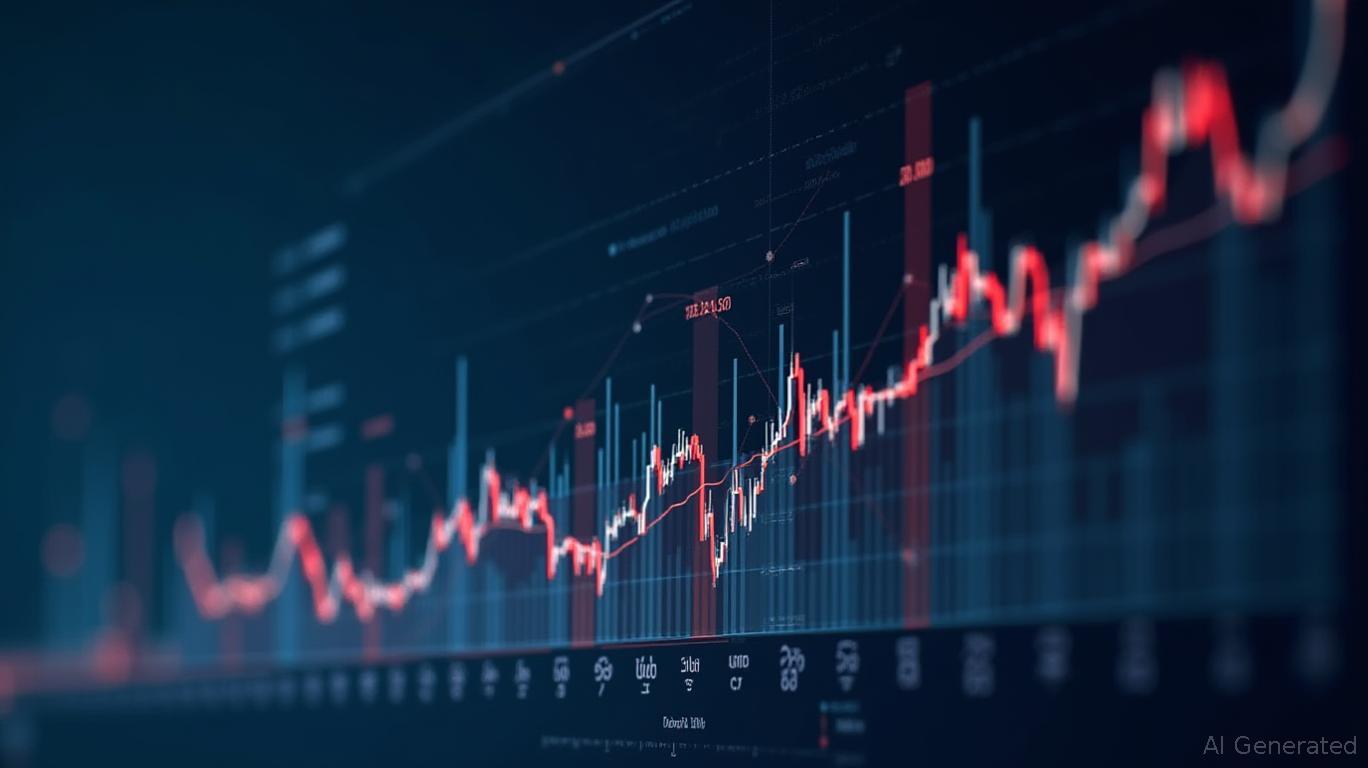Tariff Turbulence and Fed Rate Dilemmas: Navigating Inflation Risks in 2025
The coming weeks will test the resilience of global trade relations—and investor patience. As July 2025 approaches, the U.S. faces a cascade of trade policy deadlines that could reshape inflation dynamics and Federal Reserve rate decisions. With tariff disputes lingering, core inflation showing stubborn persistence, and legal battles over trade measures intensifying, the path to monetary policy clarity remains fraught with uncertainty. For investors, this environment demands a cautious approach to equities tied to consumer spending and a strategic pivot toward inflation-protected assets until post-July policy clarity emerges.
Ask Aime: Invest wisely as trade policy deadlines approach, and the U.S. faces inflation and legal battles that could impact the stock market and Federal Reserve decisions.

The July Crossroads: Tariffs and Inflation's Tightrope
The most critical deadline looms on July 9, when the U.S. must decide whether to impose 50% tariffs on European Union imports unless a deal is reached. Simultaneously, Canada has threatened retaliatory tariffs on U.S. steel and aluminum after the administration doubled levies to 50% in June. Meanwhile, the U.S.-China 90-day “pause” on tariff escalation, announced in late June, offers temporary relief but no long-term resolution.
The stakes are high: failure to secure agreements could trigger a new wave of retaliatory measures, further distorting global supply chains and driving up consumer prices. Federal Reserve Chair Jerome Powell has already warned that existing tariffs have raised electronics prices and will push inflation higher as their full effects materialize. The Tax Foundation estimates that Trump-era tariffs alone will reduce U.S. GDP by 0.8% by 2026, with retaliatory tariffs accounting for an additional 0.2% drag.
Why the Fed Can't Cut Rates—Yet
The Fed's hands are tied by inflation's persistence. Core inflation (excluding food and energy) remains above the 2% target, and tariff-driven price increases are compounding the problem. Even if the Fed wanted to cut rates to stimulate growth, doing so could signal weakness in its inflation-fighting credibility, sparking a sell-off in bonds and a further rise in yields.
The central bank's dilemma is clear: without a clear path to lower inflation, rate cuts risk undermining the progress made in taming price pressures. This leaves equities in consumer-sensitive sectors—like autos, retail, and home goods—exposed to margin compression and softer demand if households rein in spending amid higher costs.
Ask Aime: Will tariffs escalate inflation further?
Sector Risks: Autos and Retail Under Pressure
The auto sector epitomizes the tariff-inflation trap. U.S. automakers face a 25% Section 232 tariff on imported vehicles and parts, while steel and aluminum tariffs have raised production costs. Retailers, too, are squeezed as tariffs on electronics, appliances, and clothing boost input prices.
Take Ford Motor Co. (F) and General Motors (GM): both have warned that tariffs on steel and aluminum have added hundreds of dollars to vehicle costs. With consumers already cutting back on big-ticket purchases due to inflation, auto sales could stagnate further if tariffs escalate. Similarly, retailers like Walmart (WMT) and Target (TGT) face margin pressure as imported goods become pricier.
The Case for Inflation-Hedged Assets
Until trade clarity emerges post-July, investors should prioritize assets that protect against rising prices. Treasuries, particularly Treasury Inflation-Protected Securities (TIPS), offer a hedge against inflation's erosion of purchasing power. The upcoming U.S. Court of International Trade ruling on July 31—which could invalidate IEEPA tariffs—adds a wildcard: a ruling against the administration could force refunds to importers, reducing tariff revenue and pressuring the dollar.
Commodities like gold, copper, and agricultural futures also deserve attention. Gold has historically thrived in periods of policy uncertainty and inflation, while base metals like copper benefit from industrial demand resilience.
Investment Strategy: Defensive Posture Until July 31
- Avoid Overexposure to Consumer Discretionary Stocks: Hold minimal positions in auto manufacturers, big-box retailers, and apparel companies until trade outcomes are clear.
- Overweight Inflation-Protected Bonds: Increase allocations to TIPS and short-term Treasuries to insulate portfolios from rate volatility and inflation spikes.
- Diversify with Commodities: Use commodity ETFs to capitalize on inflation trends while hedging against currency fluctuations.
Conclusion
July 2025 is a pivotal month for global trade and monetary policy. With tariff deadlines, legal rulings, and inflation dynamics converging, investors must prepare for volatility. Until clarity emerges, a defensive stance focused on inflation protection—rather than chasing high-beta equities—will likely yield the best risk-adjusted returns. The path to Fed rate cuts remains blocked by tariffs and stubborn inflation; patience, not speculation, is the watchword for now.
This analysis synthesizes trade policy timelines, economic data, and market trends to inform strategic investment decisions. Always consult with a financial advisor before making portfolio changes.

Comments
No comments yet